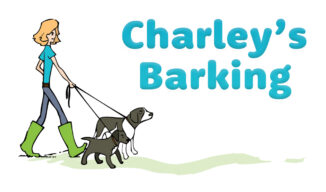So Easter is just around the corner which, let’s face it, means CHOCOLATE.
Chocolate contains both caffeine and theobromine. These are both compounds known as methylxanthines which are toxic if eaten in large quantities. As humans are rather big (when compared to pets) and have a high tolerance, chocolate poisoning is extremely rare. However this type of poisoning is not uncommon in veterinary medicine and it is something that every pet owner needs to be aware of.
What you may not know is that the theobromine concentrations in chocolate vary depending on the type of chocolate:
- There are 0.25mg of theobromine in every 30g of white chocolate
- There are 58mg of theobromine in every 30g of milk chocolate
- There are 130mg of theobromine in every 30g of dark chocolate
- There are 393mg of theobromine in every 30g of cooking chocolate
The table below shows how much chocolate your dog needs to eat before showing severe signs of toxicity and very much needing to be taken to your vet ASAP. Be aware that milder signs may still show if they eat less than the amounts shown.
Critically, if your pet eats double the amounts in the table below, there is a 50% chance that they will not make it.
Severe Toxic Dose table
Chocolate
5kg Dog
10kg Dog
20kg Dog
White
22kg
44kg
88kg
Milk
100g
200g
400g
Dark
42g
85g
168g
Cooking
14g
28g
56g
As you can see, white chocolate is almost non-toxic (your dog has to eat pretty much four times its own body weight!) but cooking or baking chocolate is properly scary. Just one or two squares is enough to cause serious issues in a 5kg dog.
See your vet even if your pet has only ingested HALF of the above amount!
What will you see?
As theobromine and caffeine stimulate the nervous system, affect the heart rate and increase the urine output, the typical signs you will see with a toxic dose include:
- Shaking
- Seeming agitated
- Vomiting (may even smell of chocolate)
- Diarrhoea
- Erratic breathing
- Increased heart rate
- Inappropriate urination
- Seizures and collapse if left untreated
Remember, if in doubt, always see your vet!
One last thing, if you do want to give your dog a treat, you can buy dog-safe chocolate, which is completely harmless to your pet, but tastes completely delicious to them.
What about cats?
Chocolate is actually slightly more toxic in cats but as they have little ability to detect sweetness, they are unlikely to consume enough to receive a toxic dose.
Did you know?
Chocolate toxicity is nothing compared to the toxicity of Xylitol. In fact Xylitol it is 100 times more toxic! What is that you ask? Xylitol is an artificial sweetener found in chewing gum, sweets, ‘sugar-free’ baked goods, breath mints, cough syrup, mouthwash and toothpaste. Ingestion of chewing gum is the most common type of poisoning seen, so always keep yours out of your dog’s reach.
Tip: Knowing how much your pet weighs will help you to recognise if and when they have eaten an unsafe amount of chocolate, or other poisons.
